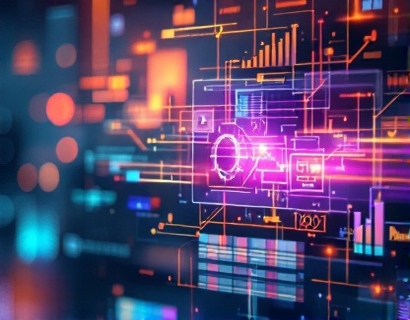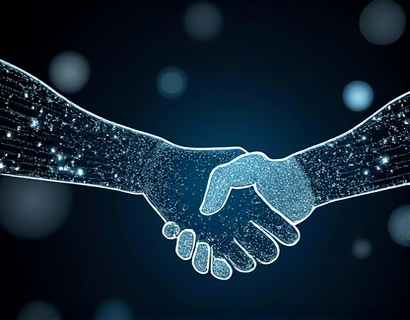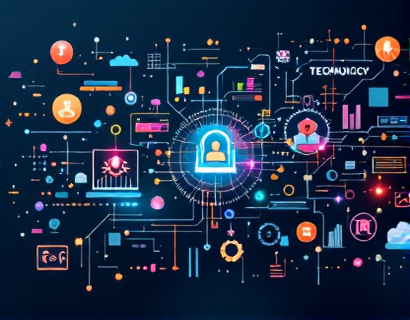Empowering Digital Asset Holders: The Role of Decentralized dApps in Ucosystem Asset Verification and Premium Access
The landscape of digital assets and blockchain-based ecosystems has evolved significantly, offering users unprecedented opportunities for investment, engagement, and access to exclusive content. However, one of the key challenges in this space remains the verification of digital asset ownership and the seamless access to premium features within these ecosystems. This is where decentralized applications (dApps) play a pivotal role, particularly in ensuring secure, efficient, and transparent asset verification for users. This article delves into the intricacies of how a decentralized dApp can revolutionize the Ucosystem, providing a robust solution for asset verification and premium access.
Understanding the Need for Decentralized Verification
In the realm of digital assets, verification is a critical step that ensures the authenticity and ownership of assets. Traditional centralized systems often face issues such as single points of failure, high transaction costs, and potential security vulnerabilities. A decentralized dApp addresses these concerns by leveraging blockchain technology to create a trustless environment where verification is handled collectively by the network, eliminating the need for intermediaries.
The Ucosystem, like many other blockchain-based platforms, benefits immensely from a decentralized verification system. Users holding digital assets within the Ucosystem require a reliable method to prove ownership and gain access to premium features, exclusive content, and enhanced management tools. A decentralized dApp provides this solution, ensuring that verification processes are transparent, secure, and accessible to all users.
How Decentralized dApps Enhance Asset Verification
A decentralized dApp for Ucosystem asset verification operates on a blockchain network, utilizing smart contracts to automate and secure the verification process. Here’s how it works:
- Asset Registration: Users register their digital assets on the dApp, providing necessary metadata and proof of ownership. This information is stored on the blockchain, creating an immutable record.
- Verification Process: The dApp employs a series of smart contracts to validate the asset’s existence, ownership, and authenticity. This involves cross-referencing with blockchain data and other trusted sources to ensure accuracy.
- Access Granting: Once verified, the user is granted access to premium features and exclusive content within the Ucosystem. This access is tied to the verified asset, ensuring that only legitimate owners can benefit from these privileges.
This decentralized approach not only enhances security but also reduces the risk of fraud and errors associated with centralized verification systems. Users can trust that their asset ownership is verified by a network of nodes, rather than a single entity.
Benefits of Decentralized Asset Verification
The adoption of a decentralized dApp for asset verification in the Ucosystem offers numerous advantages:
Enhanced Security
By distributing the verification process across a decentralized network, the risk of a single point of failure is eliminated. This makes it extremely difficult for malicious actors to manipulate or tamper with verification data. The immutability of blockchain ensures that once an asset is verified, the record cannot be altered, providing a high level of security for user assets.
Increased Efficiency
Decentralized verification processes are typically faster and more efficient than their centralized counterparts. Smart contracts automate the verification steps, reducing the time and effort required to validate assets. This efficiency translates to a smoother user experience, allowing users to access premium features promptly and without delays.
Cost Reduction
Centralized systems often incur high operational costs, which are passed on to users in the form of transaction fees. A decentralized dApp minimizes these costs by eliminating intermediaries. Transactions and verifications are handled directly on the blockchain, often with lower fees or even zero costs, making the process more accessible to a broader range of users.
Greater Transparency
Blockchain’s inherent transparency ensures that all verification processes are visible to network participants. Users can verify the authenticity of their assets and the integrity of the verification process themselves. This level of transparency builds trust within the Ucosystem, fostering a more reliable and user-friendly environment.
Enhanced User Control
With a decentralized dApp, users have full control over their asset verification and access rights. They can manage their assets and permissions directly through the dApp, without relying on third-party services. This empowerment gives users more autonomy and flexibility in how they interact with the Ucosystem.
Exclusive Benefits for Premium Access
Accessing premium features and exclusive content is a significant perk for users who have successfully verified their assets through the decentralized dApp. Here are some of the exclusive benefits:
Exclusive Content and Features
Premium users gain access to a curated selection of high-quality content, including in-depth analyses, expert insights, and exclusive interviews. This content is not available to the general user base, providing a unique value proposition for verified asset holders.
Priority Support and Services
Verified users receive priority support from the Ucosystem team, ensuring that their queries and issues are handled swiftly. Additionally, premium access may include advanced management tools, such as portfolio optimization, real-time asset tracking, and customizable dashboards, enhancing the overall user experience.
Community Engagement and Networking
Premium access often comes with invitations to exclusive community events, webinars, and networking opportunities. These events provide valuable connections and insights, helping users build relationships and stay informed about the latest trends and developments in the Ucosystem.
Rewards and Incentives
Decentralized dApps can implement reward systems for premium users, offering tokens, discounts, or other incentives for active participation. These rewards can be used within the Ucosystem or traded, adding an extra layer of value to the verification process.
Case Studies and Real-World Applications
To better understand the practical implications of decentralized asset verification, let’s explore a few case studies and real-world applications:
Case Study 1: Decentralized NFT Marketplace
A decentralized NFT marketplace integrated a dApp for asset verification, ensuring that only authentic NFTs could be listed and sold. This not only protected buyers but also enhanced the credibility of the marketplace. Users verified their NFTs through the dApp, gaining access to premium listing features, priority sales, and exclusive community events. The marketplace saw a significant increase in trust and user engagement, leading to higher transaction volumes and user satisfaction.
Case Study 2: Blockchain-Based Voting Platform
A blockchain-based voting platform implemented a decentralized dApp for voter verification, ensuring that only eligible voters could participate in elections. The dApp verified voter identities and rights, providing a secure and transparent voting process. Voters who passed verification received access to exclusive post-election analyses, community forums, and educational resources, enhancing their engagement and trust in the platform.
Case Study 3: Decentralized Finance (DeFi) Protocol
A DeFi protocol used a decentralized dApp to verify user identities and asset holdings, enabling seamless access to premium financial products such as lending, borrowing, and staking. Users who verified their assets gained priority access to these services, along with enhanced security features and personalized financial advice. The protocol saw a surge in user adoption and trust, as the verification process was both secure and user-friendly.
Challenges and Future Directions
While the benefits of decentralized asset verification are clear, there are still challenges that need to be addressed to fully realize its potential:
Scalability
As the number of users and assets grows, the dApp must scale efficiently to handle increased load without compromising performance. Implementing layer 2 solutions and optimizing smart contracts can help address scalability issues.
User Adoption
Educating users about the benefits of decentralized verification and simplifying the onboarding process are crucial for widespread adoption. User-friendly interfaces and comprehensive documentation can facilitate smoother integration.
Regulatory Compliance
Navigating the regulatory landscape is essential for the success of decentralized dApps. Ensuring compliance with local and international regulations while maintaining the decentralized nature of the platform is a ongoing challenge that requires collaboration with legal experts and regulatory bodies.
Future Innovations
The future of decentralized asset verification holds exciting possibilities, such as:
- Integration with Web3 technologies for seamless user experiences
- Advanced AI and machine learning for more sophisticated verification processes
- Interoperability with multiple blockchain platforms to expand reach and utility
These innovations will further enhance the capabilities of decentralized dApps, making them even more robust and user-friendly.
Conclusion
The integration of decentralized dApps for asset verification in the Ucosystem represents a significant step forward in ensuring secure, efficient, and transparent access to premium features and exclusive content. By leveraging blockchain technology, these dApps empower digital asset holders and platform enthusiasts, providing enhanced management tools and unparalleled access. As the technology matures and addresses current challenges, the potential for decentralized verification to transform the digital asset landscape is immense. Users can look forward to a more secure, efficient, and rewarding experience within their preferred blockchain ecosystems.










































